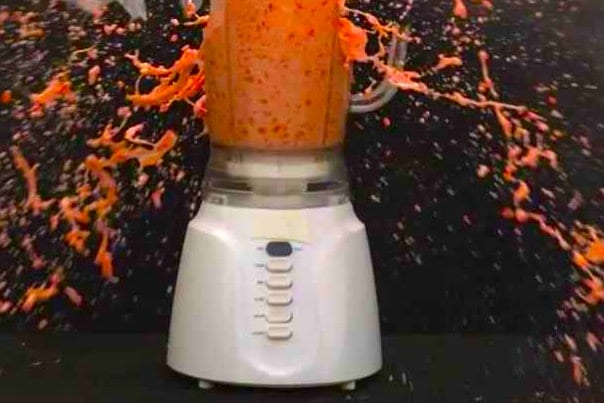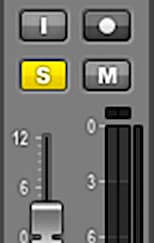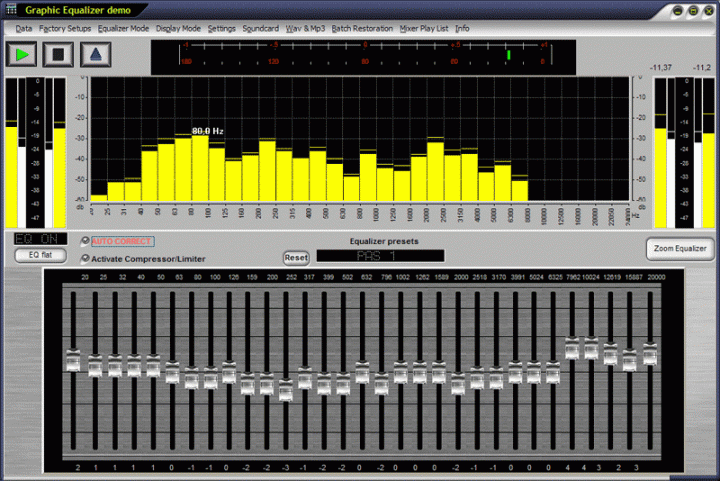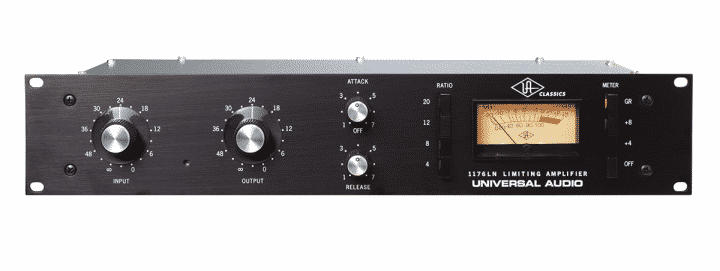Quarantine Home Recording #3: Five Ways to Tank Your Drum Mix


Home recording can be a fabulous oasis of no rules, no judgement, no fear, and no regrets, because YOU are the benevolent dictator of your own audio kingdom. You alone make the determination on how to best achieve your vision.
That said, no musician is his or her own empire.
When we put our music out there in the world, other people get to decide whether our efforts are uplifting, fun, exhilarating, inspirational, motivational, and awesome. Those same people can also brand our music as unlistenable, and describe our heartfelt creativity with several thousand phrases that pretty much mean the same thing: “Crappy.”
An excellent song brought to greater heights by a charismatic vocalist is one of the killer apps for popular appeal. But an explosive, impactful, and arrangement-sensitive drum mix is also a big part of probably every song you’ve ever loved. Advertisement
But let’s not discuss genius sonic methodologies for transforming your drums into monoliths of audio excellence. You’ve probably read tons of articles and books on that subject already.
Instead, let me help you drag your drum mix into an abyss of vile — and in just five easy steps!
Solo Every Element of the Drum Kit

You need to suffer for your art and spend copious amounts of time soloing each and every track of your drums. Solo the kick drum, snare, hi-hat, each rack and floor tom, and the overheads. Don’t forget to solo any individual tracks for miking a snare above and under, miking the kick drum front and back, and so on.
Dig in and spend hours dialing in each individual track until it’s perfect before moving to the next track. For example, if you start at the kick drum, be sure to EQ, compress, and process that beast until you’ve crafted the ultimate kick-drum sound. Only after you’ve achieved that goal should you advance to the snare drum, or whatever is next on your mix list.
Don’t worry that what you’ve accomplished here is to critically focus on individual sounds that will change when they are mixed together with all the drum tracks, and again when the drums are incorporated into the overall stereo mix with the other instruments and vocals. Just forget that everything in the frequency spectrum has to exist in harmony. Keep celebrating your isolationist credo to music! Advertisement
So what if your “perfect” soloed kick drum tone sounds like poop when the bass track is added to the mix? And, well, again when the drums are auditioned with all the other tracks in the song mix. So what if you’ve signed yourself up for additional mix sessions of chasing your tail as you solo the kick-drum track again to determine how you could have gone so wrong?
Because you DIDN’T go wrong. You accomplished the ugly mix job you were expected to do. Bravo!
It would have been a pity if you had NEVER TOUCHED THE SOLO BUTTON and brought up all the drum tracks simultaneously as a “full kit,” adjusting levels and EQ tweaks within the context of how they sound along with the vocals, guitars, bass, percussion, background vocals, keyboards, and so on.
If you had taken that approach, you could have delivered a kick-ass mix with all frequency ranges balanced, and everything sounding awesome as a stereo track—you know, how the listener will ultimately hear the music. But what a foolish thing to do… Advertisement
EQ For the Sake of EQing

If your drums sound totally brilliant the first time you bring up the faders, something is wrong. Drums never sound good unless each individual track is EQ’d within an inch of its life. Don’t be fooled. There is no way that you — or an engineer — originally recorded the drum kit with such precision and sonic excellence that no more tweaking is needed.
Get in there and start adjusting frequencies again and over again — until you can barely hear the difference between low-midrange and high-midrange sounds. Boost and cut frequency bands until every possible option of timbral transformation is evaluated.
At the end of it all, make doubly sure that NONE of the sound of the drums as they were organically recorded in the room remains. Make your drum mix an altar to excessive EQ, as well as a success story for taking a good thing and ruining it. You go! Advertisement
Remember, only a dullard trying to do the most sensitive mix for the song would listen to everything in context and determine the drums don’t actually need any EQ tweaks.
Squeeze that Lemon!

C’mon. You’ve read all the classic studio stories about vintage tube and solid-state compressors and how those devices forged the sound of rock. So don’t shy away from bringing on too much of a good thing.
The idea here is to totally crush the dynamics out of the drums. It’s like those old mafia flicks where a murdered gangster is tossed into a car trunk, and then the car is dumped into a scrapyard’s hydraulic compactor where metal and flesh is flattened into a pancake. That’s what you should be doing with your drum tracks.
Pulverize the compression threshold into the depths of -35dB or lower, and crank the ratio to 10:1 with a fast attack time. After all, YOU are the mixer, so don’t let the drummer drive the dynamic structure of the drum performance. (Even if the drummer is you, the “mixer you” outranks your player persona.) Advertisement
What you want is a sledgehammer that pummels the track into submission. Every snare, tom, and kick impact delivers maximum damage. Every little squeak and imperceptible rattle of drum hardware boosted up until those “unwanted” sounds are incorporated into the mix for absolute savagery.
The takeaway here is if you are looking for sensitivity and dynamics from your drum mix, you’re just plain crazy. Who wants that?
Shrink the Stereo Spectrum

Few things are more annoying than those ’60s rock records that appeared when stereophonic LPs became widely available. Drums on the left channel, vocals on the right. The whole band on the right side, and only the vocalists audible on the left. And, in those days, stereo albums usually cost a whole dollar more than the monaural versions. Rip off!
Small wonder then, that some savvy and sophisticated producers started moving mix elements closer towards the middle as stereo mixing “matured.” Even those wild-ass guitar players of the big-hair-era started using rack gear that purported to be stereo, but split a mono input signal electronically into a ratheer sedate left/right perspective that was, thankfully, more or less “enhanced mono.” Advertisement
See, humans do get smarter the more they play with technology.
So, you too, must strive to diminish any wide-screen dimension in your drum mixes. No one wants to hear spectral silliness any more. Stop the panning madness! Be a responsible steward of stereo and keep the leash tight. Position your kick and snare right in the center at 12 o’clock, and spread the hi-hats, rack, and floor toms no wider than 10 o’clock and 2 o’clock. If you want to go a little nutty, pan the overhead mics at 9 o’clock and 3 o’clock, but always practice restraint.
Only someone lost in a psychedelic fever dream circa 1967 would foist an animated, cinematic mix on an unsuspecting public with only the kick drum panned in the center, and the other elements whipped across the spectrum as follows: snare at 10 o’clock, hi-hat at 9 o’clock, rack 1 hard left, rack 2 at 2 o’clock, floor tom hard right, and the overheads hard right and hard left.
Remember, the Beatles only really cared about the mono mixes of their recordings. So tell panoramic stereo to take a hike…
Own the Soundstage

Drums provide the power and groove to a track, so don’t pay too much attention to those other elements that merely fill space — such as the vocals, guitars, bass, and so on.
People adore snare drums, right? (We learned that in the ’80s.) So don’t be timid about the volume level of the snare. Make sure it’s loud and proud. Even if the snare level competes with the intelligibility of the lead vocal, it’s more important that the drums are powerful. Advertisement
Same with the kick drum. Modern music is bullish on low end, so make sure the kick is like a series of sonic booms. If the electric bass gets lost in the mix as a result, so be it. Feel free to devour the high end by pushing the cymbals and hi-hats way up, as well.
A good test to ensure the drums are the hero of your mix is to listen with the playback level very soft. If you can still hear the drums loud and clear and far above the vocals and other instruments, you’ve done your job. A fair amount of records in the ’60s possessed drum tracks that were barely audible pulses, so who could blame you for seeking revenge for the bad behavior of the past. Turn those drums UP!
Stop the Madness

Think the preceding mix examples are fairy tales to elicit a chuckle or two? I wish they were.
Unfortunately, I have attended scores of mix and remix sessions were artists started their mixes precisely as detailed in the “Five Ways” content I’ve shared here.
Of course, it’s your mix to ruin or elevate, and the perception of art being subjective and all, it’s also not up to me to tell you what is good or bad about your drum mixing.
But if YOU are feeling less-than-confident about your mixing — or if you find the public is not embracing your song releases — see if you are enacting any (or all) of the drum examples detailed in this article. Advertisement
If so, don’t get depressed or frustrated…
Happily, the path to truly fabulous drum mixes may be in simply reversing your potential bad habits and trying a new approach. Have fun!


